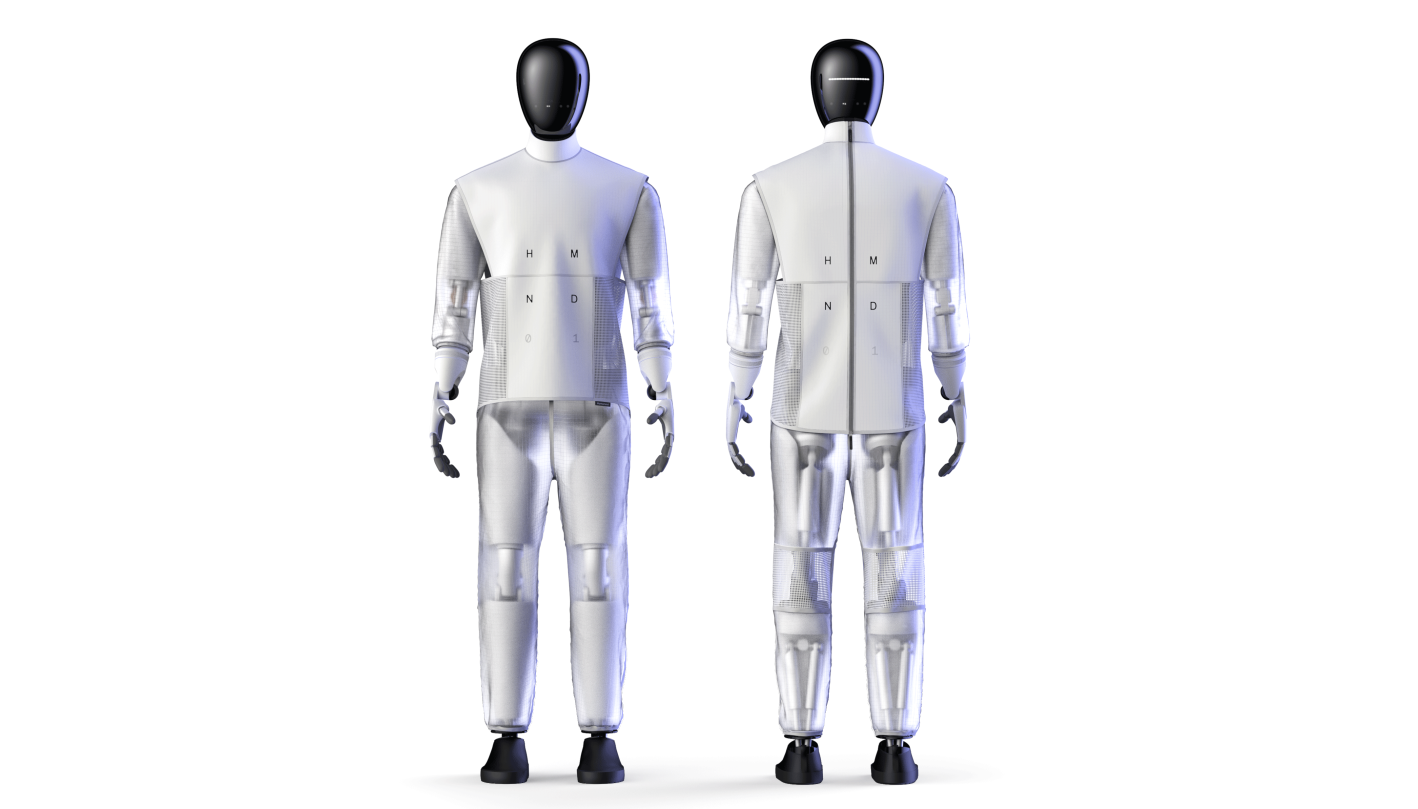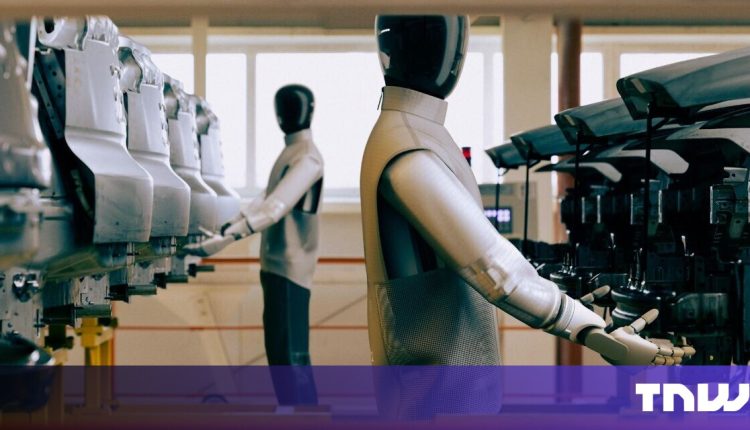Elon Musks Optimus demo At Tesla's We robot The event became clear: when it comes to humanoids, the limelight still belongs to the United States. Then there is Asia – with the fast developments of China and Japan and South Korea's deep legacy in robotics. The headlines still have themselves for billion dollar budgets, fast hardware literations and slick simulation roles.
However, there is a different development in Europe behind the noise – quieter, but possibly far more consistent. The next chapter of the humanoid robotics cannot be defined by those who move first or create the most striking prototypes, but by those who move with the necessary discipline and consistency. And Europe has the potential to lead this new era.
Regulation as a strategy
In most conversations about innovation, regulation is framed as a brake. In Silicon Valley, it is often seen as a hurdle or as a signal of bureaucratic excess. But Europe – especially in AI and robotics – rewrite this narrative. With the AI law now adopted, the EU is the first region to offer comprehensive legal clarity about the use of AI systems with high risk, including humanoid robots.
We also have to take into account that other countries will probably take regulatory framework conditions that are largely corresponding to the EU, even if they are less strict. If we design with European standards right from the start, we will adapt well to adapt quickly if new regulations arise elsewhere.
TNW City Coworking Space – where your best work happens
A area of work for growth, cooperation and endless networking opportunities in the heart of technology.
This clarity is important. If investors and industrial partners can reliably evaluate the compliance risks, they are most likely to celebrate resources. In such a complex and potentially disturbing area as robotics, the progress does not slow the progress.
Europe has also introduced or updated several other regulations that affect the robotics directly:
Together, these framework conditions of the EU give a coherent and predictable regulatory environment. Yes, it is difficult, but in view of the effects, this offers exactly what the humanoid sector needs: clarity.
Provision, not demos
While the United States is often dependent on innovations that are financed by Big Tech Monopolies and relies China on state manufacturing strategies, the Europe's robotics sector is based on a modular cooperation. Startups and research laboratories split into well-financed clusters, which are often supported by EU-supported initiatives Ri4eu And EIC accelerator. These programs offer access to testbeds, pilot financing and collaborative F&E networks.
In addition, the geographical and industrial structure of Europe offers a special advantage: an immediate proximity to real applications. According to neighboring logistics centers, manufacturing zones and retail chains in contiguity, iteration can accelerate and the development can match the actual operational pain points of the continent. McKinsey estimates that in some of the critical sectors in Europe – including retail and logistics – salary statements alone is 1.7 trillion dollars (1.55 trillion €). This makes the automation extremely profitable and ripe for disorders.
These factors played a key role in Humanoid's strategy, the robotic company that I founded in Great Britain last year. Our goal is not only to impress on stage. It is far more important that we seamlessly integrate innovations into real workflows. For this we have accepted a simple, modular design philosophy: a roller -base that corresponds to logistics environments and accelerated by simulation and feedback from real industry failure. We believe that the hype has to be based on reality – a way of thinking that uses investors in European robotics.
This shift is already reflected in the financing dynamics. Neura -Robotic ' € 120 million financing round In January 2025, one of the largest in European robotics was to this day. And investors are now relying on full stacking teams with credible deprivation strategies-amstatt only on speculative technology.
Humanoid's latest robot, HMND 01, was introduced in a video at the beginning of this year. Credit: Humanoid
A better fit for the future of work
European regulation also does not help reduce uncertainty, but also values that form the development and provision of humanoic robots. The You have a document Requires high-risk systems that are used in jobs, public spaces and health environments to meet strict safety, transparency and surveillance standards of people.
Such a framework promotes the trust, which is of essential importance for robots that work in sensitive environments such as factories, hospitals or older care facilities. The focus in Europe on traceability and ethical co-development goes beyond the mitigating risk-it creates the acceptance conditions on the scale, under which security and dignity are not negotiable.
In addition, this approach helps to position robots as a partner. By designing augmentation and not the displacement, as often seen in the United States-European startups model a more humanly centered approach to automation. They also offer an alternative to the dominant story that robots will replace people in critical roles.
It is also worth noting that some jobs are not intended for people like them Heard individuals to exploit their full potential. For example, a humanoid could take on the task of moving boxes all day to move a warehouse. This is not just a replacement; It is an expansion of existing automation skills that enable people to find targeted work.
This distinction comes into focus when we look at the places where humanoids are most needed, such as logistics centers, clinics and nursing homes. These environments have real spatial and regulatory restrictions and little space for errors. The tasks there are repeated, but require precision, and people are extremely busy. In these settings, robots have to support the workflow quietly and do not interrupt. This requires thoughtful integration, which means reacting at the right pace, treating objects predictable and remaining out of the way if necessary.
These are practical challenges that are characterized by daily routines, not just technical services. And from our point of view, the careful, user -shaped development model of Europe is well suited to meet them.
Lief chains and strategic independence
There are still concerns in European robotics that need to be addressed. From 2025 China controls checked 63% of the humanoid hardware supply chainFrom rare earth magnets to important actuators. However, we now see that Global Original Equipment Manufacturers (OEMS) work together with humanoid creators in Europe to work together hardware components. This strategy can weaken the risk of over -dependency.
While the USA dominates in AI software, only a few actors offer fully integrated stacks worldwide. We see some movements in this direction in the USA and China, and Europe – which still depends on imports – has to learn to navigate this space enforceable.
The demands for the diversification of supply diversifies are growing. In June 2025, Benjamin Krieger, from The European Association of Automobil Suppliers (Claa)Present emphasized the need For stronger EU supply chain routes due to the export controls of China for rare elements. In the USA are analysts Similar alarms sound.
In order to reduce the dependency, Europe must support the local production of key components, incentive for alternative procurement and form commercial alliances outside of Beijing's orbit.
What's next?
The next phase of the humanoid robotics is not obtained by the one that moves the fastest. It is won by the one who builds best.
What will this require? At the beginning and support of the financing and support mechanisms that help innovations, through the later phases of the Technology (TRL) Scaling and switch from pilots to rollouts in industrial quality. Second, industrial partnerships that begin during the prototype do not fake afterwards. Third, politics agility for fast-track certification and at the same time the highest security standards.
What is at stake is not just the one who secured most of the patents-we have already seen that this is done without a meaningful commitment in the real world. The real challenge is whether we can create systems that are safe into human environments, maintain public trust and tackle the real concerns that people have – from privacy and transparency to everyday security and interaction.
Europe does not have to imitate Silicon Valley or Shenzhen. Instead, it has to double what it is already doing: interdisciplinary cooperation, ethical tech design and industrial pragmatism.
The global humanoid breed is not a sprint-es is a long-term infrastructure project. And if we do it right, Europe could build up the most trustworthy workforce of the future- one that works with people and changes the world, a robot.


Comments are closed.